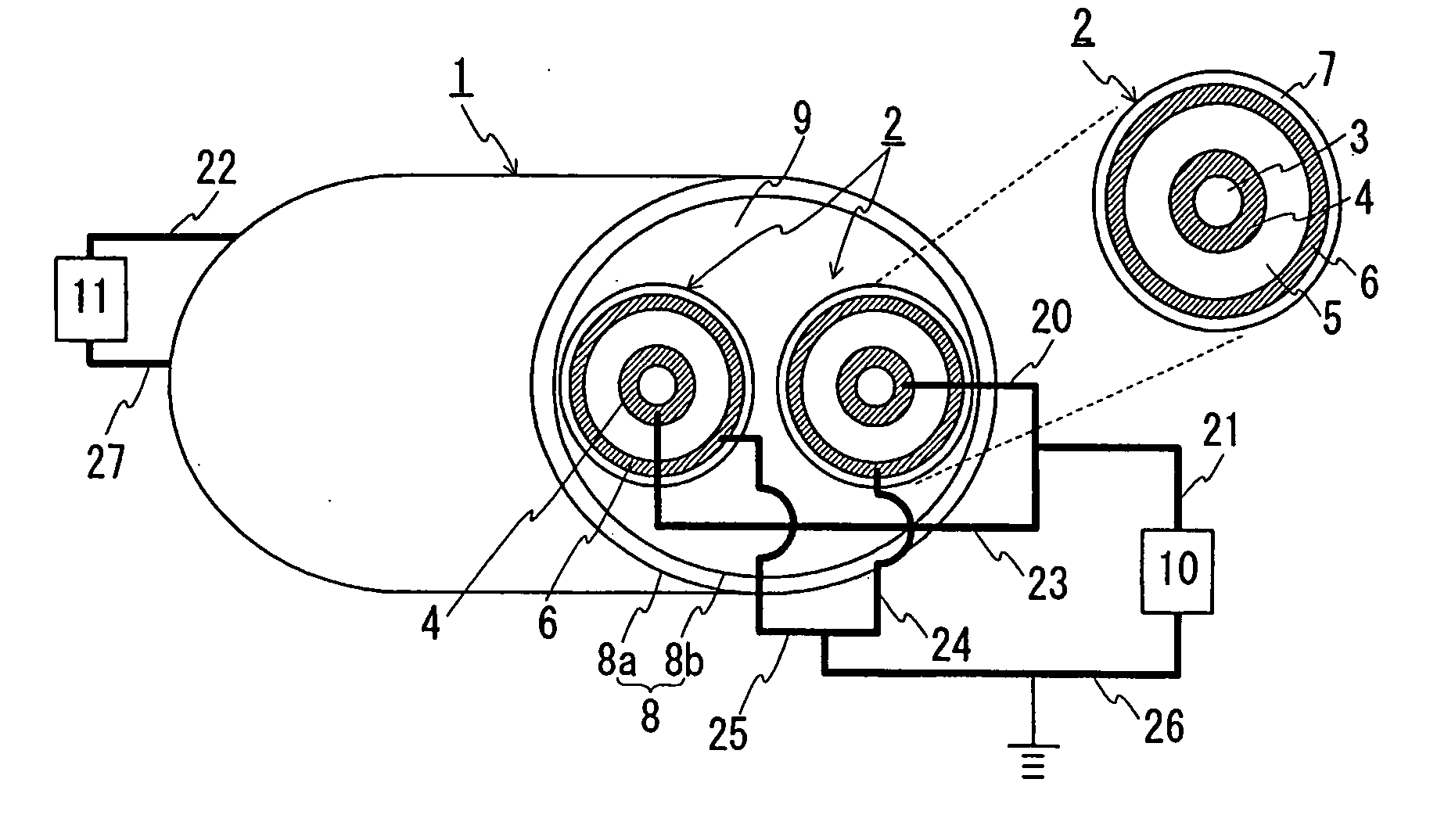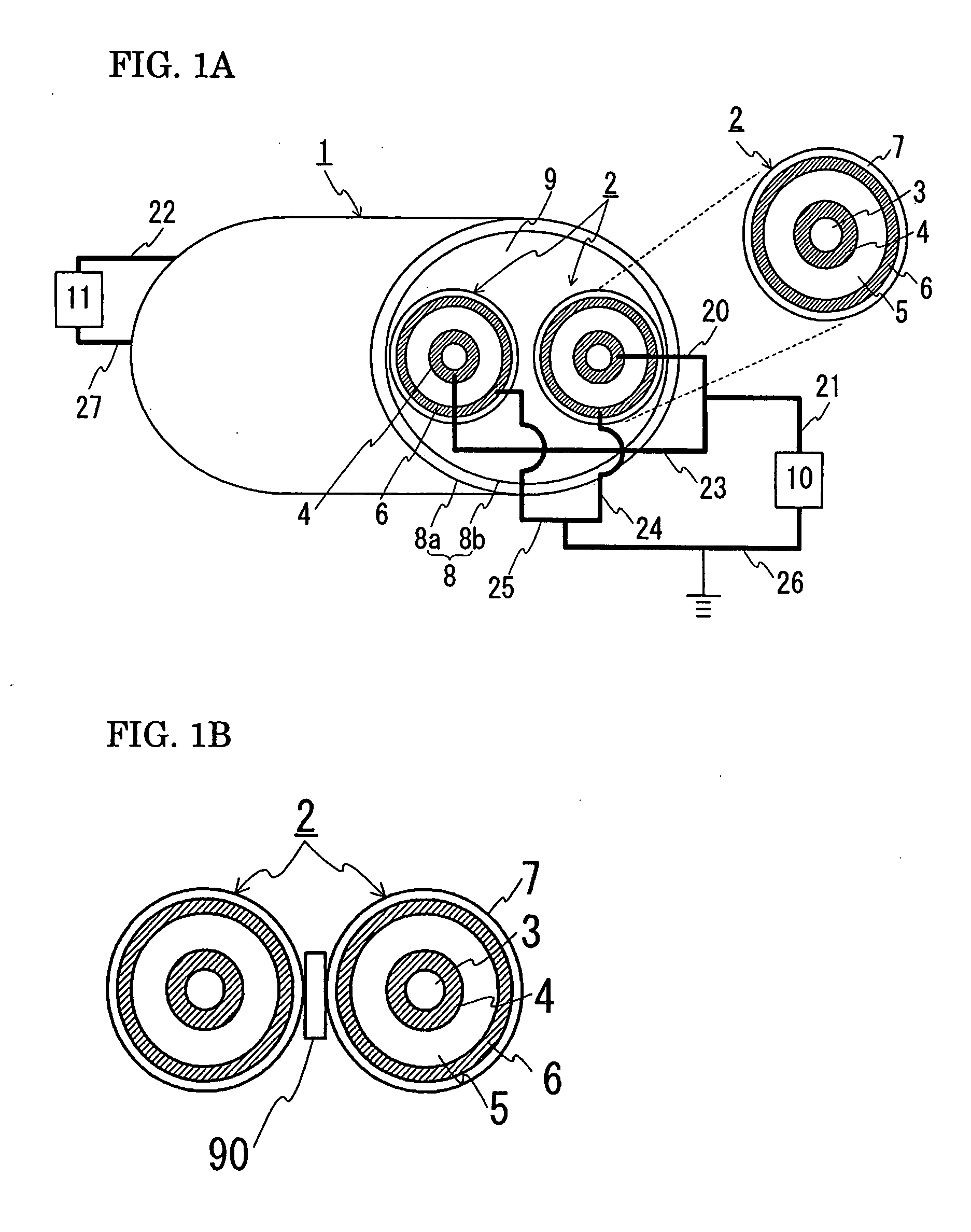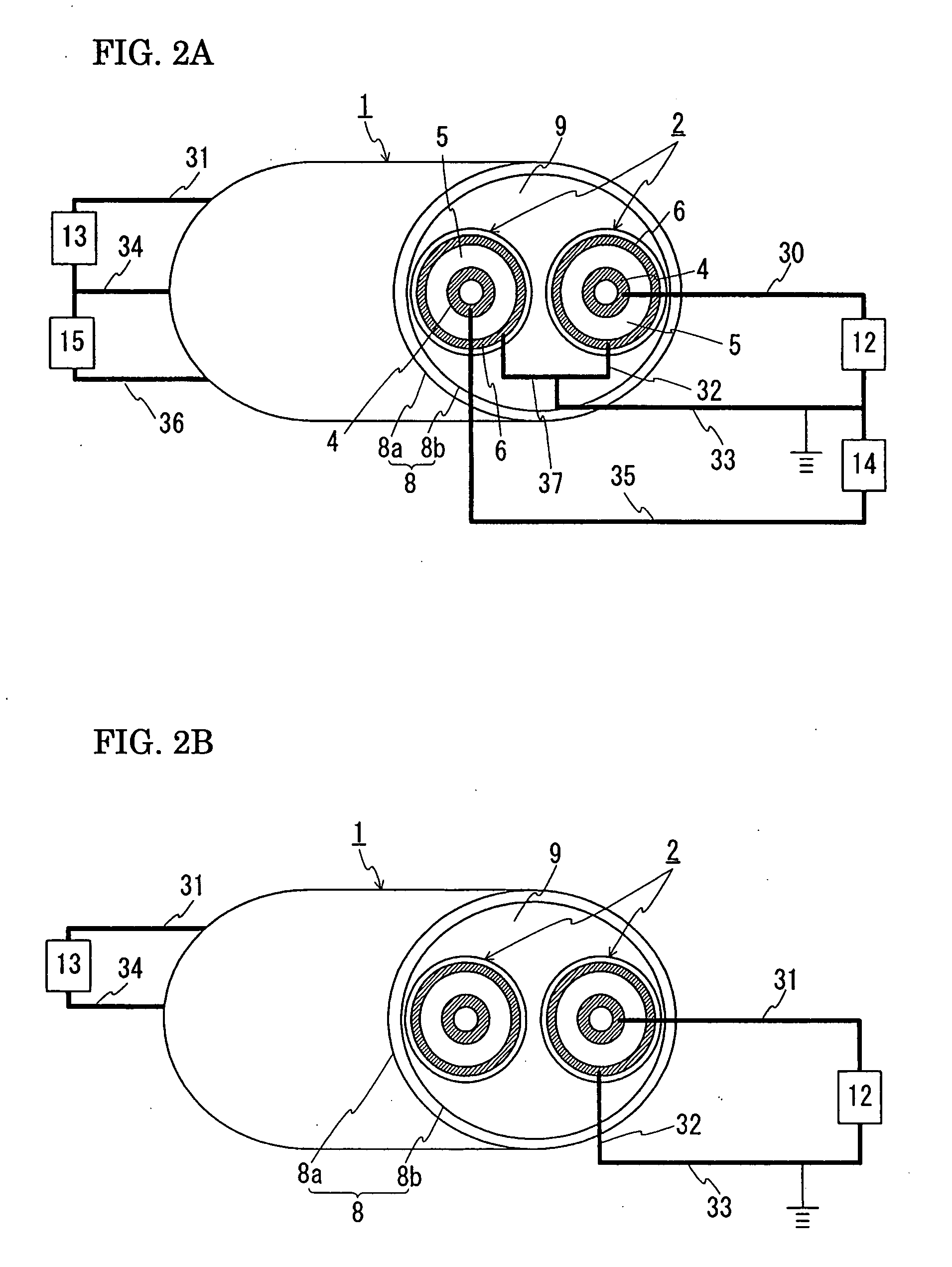Superconducting Cable
a superconducting cable and cable technology, applied in the direction of superconducting magnets/coils, insulated conductors, cables, etc., can solve the problem of excessive temperature rise, reduce the intruder's heat, reduce the cable diameter, and improve the dc voltage resistance.
- Summary
- Abstract
- Description
- Claims
- Application Information
AI Technical Summary
Benefits of technology
Problems solved by technology
Method used
Image
Examples
example 1
[0052]FIG. 1(A) is a schematic configuration diagram showing a state in which a DC transmission line for unipolar transmission is constructed by using a superconducting cable of the present invention. (B) is a schematic cross-sectional view showing a state in which a spacer is placed between the cable cores in the superconducting cable. In the following drawing, the same sign represents the same item. A superconducting cable 1 has a structure in which two cable cores 2, each of which has a superconducting conductor layer 4 and an outer superconducting layer 6 both made of a superconducting material, are twisted together and housed in a heat-insulated pipe 8. Each of the cable cores 2 is provided with a former 3, the superconducting conductor layer 4, an insulating layer 5, the outer superconducting layer 6, and a protecting layer 7 in this order from the center.
[0053]In this example, the superconducting conductor layer 4 and the outer superconducting layer 6 were formed by using Bi-...
example 2
[0057]Next, the case where a bipolar transmission is performed is explained. FIG. 2(A) is a schematic configuration diagram showing a state in which a DC transmission line for bipolar transmission is constructed by using a superconducting cable of the present invention. (B) is a schematic configuration diagram showing a state in which a DC transmission line for unipolar transmission is constructed by using the superconducting conductor layer and outer superconducting layer of one of the cores. The superconducting cable 1 used in Example 1 can also be used for bipolar transmission. To perform the bipolar transmission, it is recommendable to construct a transmission line as shown in FIG. 2(A). More specifically, one end of the superconducting conductor layer 4 provided in one of the cores 2 (in FIG. 2(A), the core 2 at the right) is connected to a DC-AC converter 12, which is connected to an AC system (not shown), through a lead 30. The other end of the same superconducting conductor ...
example 3
[0067]Next, an explanation is given to a structure provided with both an outward channel of the coolant and a return channel of the coolant. FIG. 3 is a schematic cross-sectional view showing a superconducting cable of the present invention formed by twisting together two cable cores and coolant-circulating pipes. In the above-described Examples 1 and 2, an explanation is given to a structure in which the inside of the inner pipe of the heat-insulated pipe is used as a coolant channel. However, as shown in FIG. 3, coolant-circulating pipes 40 may be provided separately so that a space 9 in the inner pipe can be used as an outward channel of the coolant and so that the inside of the coolant-circulating pipes 40 can be used as a return channel of the coolant. When the outward and return channels of the coolant are provided as described above, the intruding heat can be decreased.
[0068]In this example, two coolant-circulating pipes 40 were prepared to form a structure in which two cable...
PUM
| Property | Measurement | Unit |
|---|---|---|
| diameter | aaaaa | aaaaa |
| diameter | aaaaa | aaaaa |
| thickness | aaaaa | aaaaa |
Abstract
Description
Claims
Application Information
 Login to View More
Login to View More - R&D
- Intellectual Property
- Life Sciences
- Materials
- Tech Scout
- Unparalleled Data Quality
- Higher Quality Content
- 60% Fewer Hallucinations
Browse by: Latest US Patents, China's latest patents, Technical Efficacy Thesaurus, Application Domain, Technology Topic, Popular Technical Reports.
© 2025 PatSnap. All rights reserved.Legal|Privacy policy|Modern Slavery Act Transparency Statement|Sitemap|About US| Contact US: help@patsnap.com



